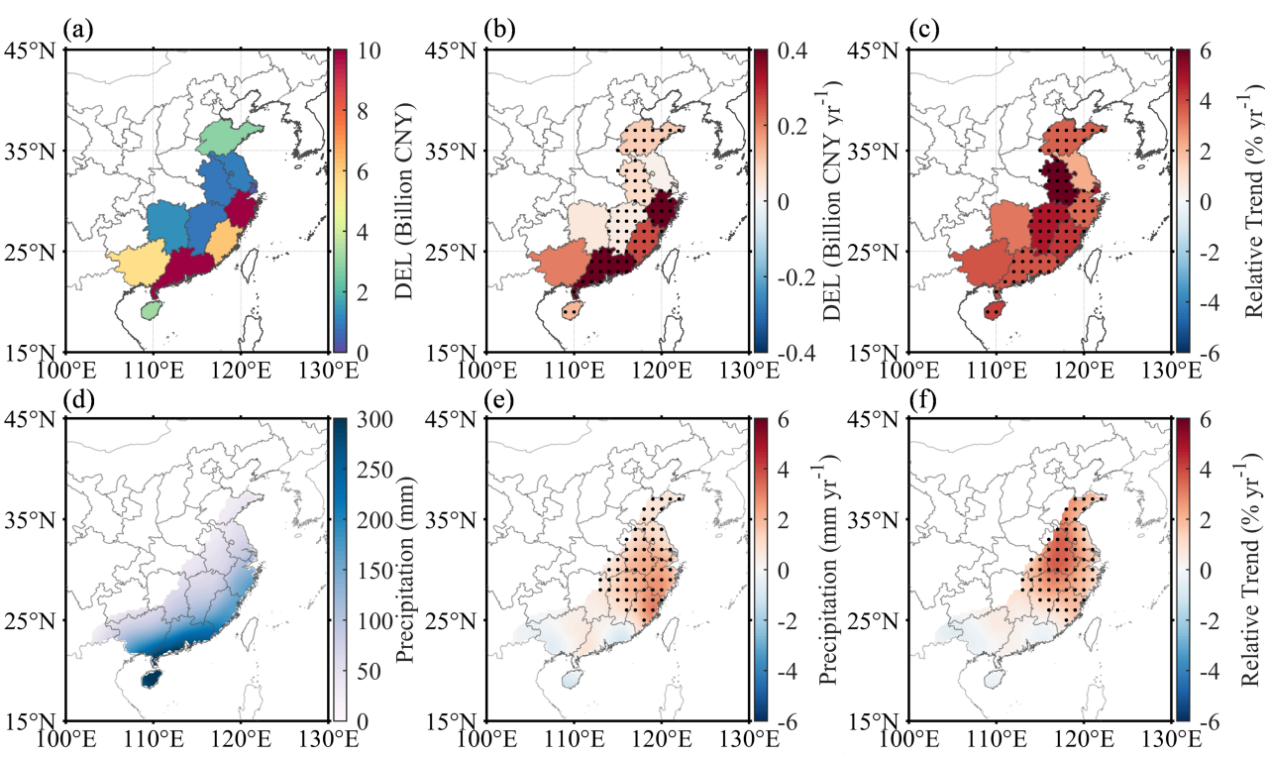Tropical cyclones (TCs) are among the most destructive natural disasters globally, posing significant threats to human life and property. In China, this threat is particularly serious, with the World Meteorological Organization reporting economic losses of $134.32 billion due to TCs between 1970 and 2019.
The losses and damage induced by TCs show a long-term increasing trend in China mainland, with a spatial distribution characterized by a gradual decrease in the southeast coast-to-inland directions. In general, the occurrence of TC disasters is more frequent in coastal areas than inland. However, inland areas often lack the resilience to withstand TC attacks, resulting in substantial damage when these storms reach farther inland. Assessing the TC disasters in inland areas is of great significance for TC disaster prevention and mitigation in these areas.

Chair Professor Xiping Yu’s research team from the Department of Ocean Science and Engineering at the Southern University of Science and Technology (SUSTech) has made important progress in assessing the TC disasters in inland areas. They have revealed the increasing threat of TC disasters in the inland regions of East China.
Their work, titled “Growing Threat of Tropical Cyclone Disasters in Inland Areas of East China”, has been published in Geophysical Research Letters, a journal listed in the Nature Index.
This study investigates the characteristics of the spatial distribution of TC destructiveness, measured by precipitation, power dissipation index (PDI), and overland duration of TCs, and the relevant damage, measured by direct economic losses (DELs), in China between 1984 and 2020. The researchers pay particular attention to the long-term trend of TC destructiveness and damage in inland areas. The results demonstrate an increasing threat of TC in inland areas and imply an ever-increasing necessity for TC disaster prevention and mitigation in the inland areas of East China.

Figure 1. The long-term trend of TC destructiveness and relevant damage in inland China
The rapid increase of TC-induced damage in the inland areas of East China is primarily driven by the rising annual number of disastrous TCs in this region. Such an increase in the number can be related to the increasing TC landfall frequency and the increasing post-landfall TC decay timescale. It is further demonstrated that the increase in specific humidity, soil moisture, and the decrease in vertical wind shear in East China favor the survival of TCs in inland areas.

Figure 2. The spatial distribution of climatological mean and long-term trend of TC-induced DELs and precipitation
In contrast, there is a limited impact of disastrous TCs on inland areas in South China, which is mainly related to the decrease in the number of TCs making landfall in this region. The underlying mechanism of the increasing number of landing TCs in East China was revealed in detail in the paper “Variability of Tropical Cyclone Landfalls in China”, published in the Journal of Climate in 2021 by postdoctoral fellow Kaiyue Shan from the same research team.
Doctoral student Feng Yan is the first author of the paper, with Chair Professor Xiping Yu serving as the corresponding author. Dr. Kaiyue Shan and Professor Haikun Zhao also made significant contributions to this work.
Paper and related links:
Geophysical Research Letters: https://doi.org/10.1029/2024GL111877
Journal of Climate: https://doi.org/10.1175/JCLI-D-21-0031.1
To read all stories about SUSTech science, subscribe to the monthly SUSTech Newsletter.
Proofread ByAdrian Cremin, Yingying XIA
Photo ByDepartment of Ocean Science and Engineering